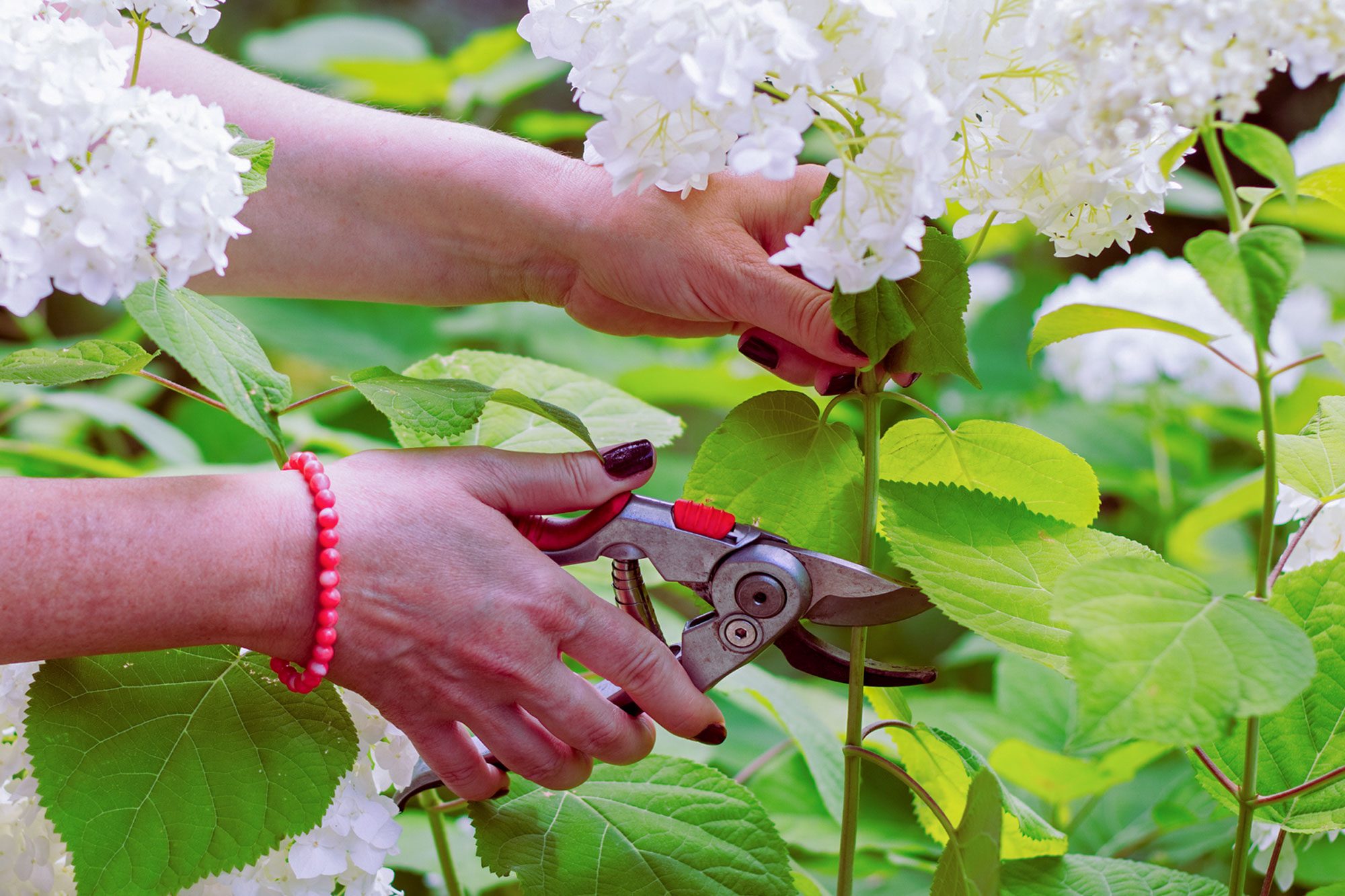It's fall and you're cleaning up your garden. What happens if you don't prune your hydrangeas? Let's find out.

Should You Prune Hydrangeas In the Fall?

I’m the proud owner of a hydrangea that is more than six feet tall and peaks out over my privacy fence so everyone can see its big football-shaped blooms. It’s a commonly grown kind, Hydrangea paniculata ‘Limelight.’ My neighbors often comment in late summer about how big and beautiful the flowers are. Several have asked for my secret for growing such a big, free-flowering hydrangea. My secret is that I rarely prune it. It’s a beautiful example of what happens if you don’t prune your hydrangeas often. But could I prune it in the fall? Yes, if I wanted to.
On This Page
Should You Prune Your Hydrangeas in the Fall?
Whether or not you should prune your hydrangeas in the fall depends on the answers to these two questions:
- Does it bloom on old wood or new wood?
- Does it need to be pruned?
If it’s the type of hydrangea that blooms on old wood, the flower buds for next year are formed in late summer and early fall. So, pruning it back in the fall means you may be cutting off all the flower buds for next year.
If it’s the type of hydrangea that blooms on new wood, the flower buds will not form until spring. Pruning it back in the fall will not cut off next year’s flower buds because they will not have formed yet.
However, most hydrangeas don’t need to be pruned in the fall, whether they bloom on old or new wood.
How Do You Know If Your Hydrangea Blooms on Old Wood or New Wood?
If you planted your hydrangea, check the plant label (you kept that, right?) and see what type it is.
Generally, Hydrangea macrophylla (big leaf hydrangeas) and Hydrangea quercifolia (oakleaf hydrangeas) bloom on old wood and should not be pruned in the fall. Hydrangea paniculata (panicle hydrangeas) and Hydrangea arborescens (smooth hydrangeas) bloom on new wood, so pruning them in the fall doesn’t cut off flower buds.
If you don’t have the label, bring a photo of the hydrangea in bloom and a leaf or two to a local garden center and ask them if they can identify the type. If you can’t figure out the type, don’t worry.
“While some gardeners know what types of hydrangeas they have and when it’s safe to prune, many do not,” says Natalie Carmolli of Proven Winners ColorChoice Shrubs.
“If you’re just not sure, a good rule of thumb is when in doubt, don’t prune. Hydrangeas will grow and flower well with nothing more than removal of spent flowers and any dead wood in early spring.”
What Happens If You Don’t Prune Hydrangeas in the Fall?
Nothing. Your hydrangea may thank you with prolific blooms next year because you didn’t prune it.
This season’s flowers will slowly dry up and, throughout the winter, blow off and away. So, your best bet is to follow Carmolli’s advice and keep your pruners away from your hydrangeas in the fall.
In areas with heavy snowfalls, you may want to cut off those dried flowers in late fall. This way, they’re not weighed down by the snow, which potentially causes branches to split. Only cut enough to remove the flowers.
How to Prune Hydrangeas
Generally, if you’ve chosen a hydrangea that’s the right mature size for your garden, you may only need to do light pruning for your hydrangea to live a long, flower-full life. Here are a few tips for success:
- Cut back any clearly dead branches, which are brittle and snap off easily. This can be done in the fall or any time you see a dead branch.
- To reduce the size of a hydrangea that blooms on new wood, cut off about one-third of each stem in late fall or early spring before it begins to leaf out. If your hydrangea blooms on old wood, prune it right after it has bloomed when the flowers are fading.
- If you prefer a tidier look after the flowers have faded, you can carefully cut off the dried flowers at any time.
When pruning, always cut the stem at an angle directly above a live bud. You should leave only about 1/4 in. of stem above the bud. The University of Minnesota Extension offers this handy diagram that shows what a good cut looks like.
When to Prune Hydrangeas
Now that you know what happens if you don’t prune hydrangeas, you can decide whether or not pruning them is right for you. If your hydrangeas are safe to prune in the fall, you’ll want to grab your shears before the first snowfall. This way, you’ll remove anything that could get weighed down by snowfall and break, which would damage your plant. You’ll also be ahead of the new leaves, so you’ll have more direct control over the size.




















